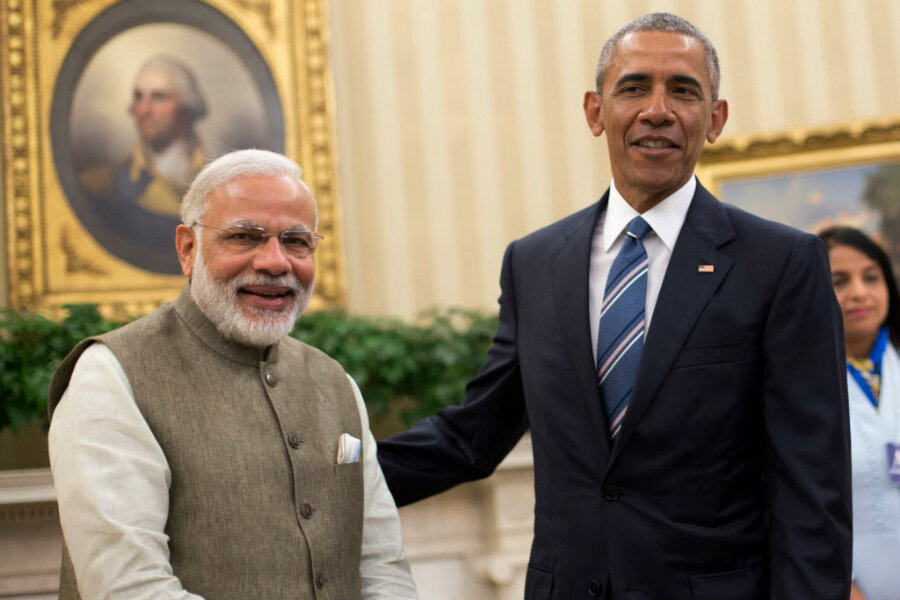The India-US ‘love fest’
Loading...
It might seem odd that the United States and the world’s biggest democracy haven’t always gotten along very well.
For decades after its independence from Britain following World War II, India was guided by a policy of nonalignment, pledging itself to neither the US nor the Russian side of the cold war, suspicious of both. US-Indian relations would warm and cool over the years, but the countries were never close.
Now the reasons for India to keep at arm’s length from America have largely dissipated and the mutual advantages of ever-tighter ties keep growing.
So when Indian Prime Minister Narendra Modi spoke with President Obama in Washington June 7, and to a joint session of the US Congress June 8, it prompted at least one observer to call the occasion nothing less than a mutual “love fest.”
Mr. Modi was doing the wooing, and the US leaders seemed to like what they heard.
Modi, who comes not from India’s elite but who rose out of poverty, was swept into office in 2014 on a campaign promising political reforms and economic modernization. He realizes he needs American investment and technology to keep India’s fast-growing economy strong. He also is eying a huge economic rival in China to the east and terrorism in Afghanistan to the west.
While Modi and Mr. Obama seem to have struck up an unexpectedly amiable relationship, the forces pushing the two countries together are more than personal. Not the least are the more than 3 million Indian-Americans, many of them in successful professional careers, who are helping to bridge political and cultural divides between the two countries.
“If I have to describe the India-US relationship in a single word, I will say we are natural allies,” Modi told Time magazine in a lengthy interview last year. What India can do to benefit the US, and vice versa, is too limited a goal for the relationship, he said. “I think the way we should look at it is what India and the US can together do for the world.”
In his speech to Congress Modi mentioned admiration for American icons Walt Whitman, Henry David Thoreau, Abraham Lincoln, and Martin Luther King Jr., and spoke of the honor he felt by being invited to speak in “This temple of democracy [that] has encouraged and empowered other democracies the world over.”
Modi faces a tall task to deliver on his promise to vastly improve the lives of India’s millions of impoverished people – many of whom still lack access to basic sanitation or electricity – during his five-year term of office.
The US sees a rising partner for trade, an ally in fighting terrorism, and a counterweight to Chinese influence in Asia.
As two of the top carbon-emitting countries in the world, the US and India are pledging to work together to reduce emissions that cause climate change.
“For us in India, to live in harmony with mother earth is part of our ancient belief,” Modi told the gathered members of Congress.
With the world map dotted with “hot spots” and crises, closer ties for these “natural allies” is welcome news. It’s a relationship that can benefit both countries – and the world.





